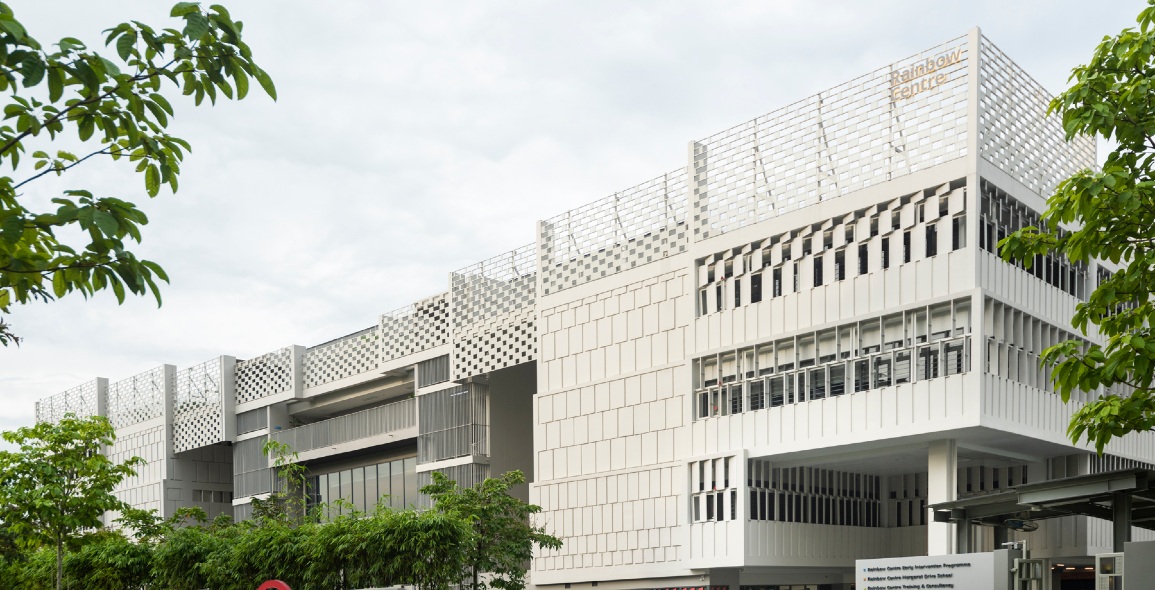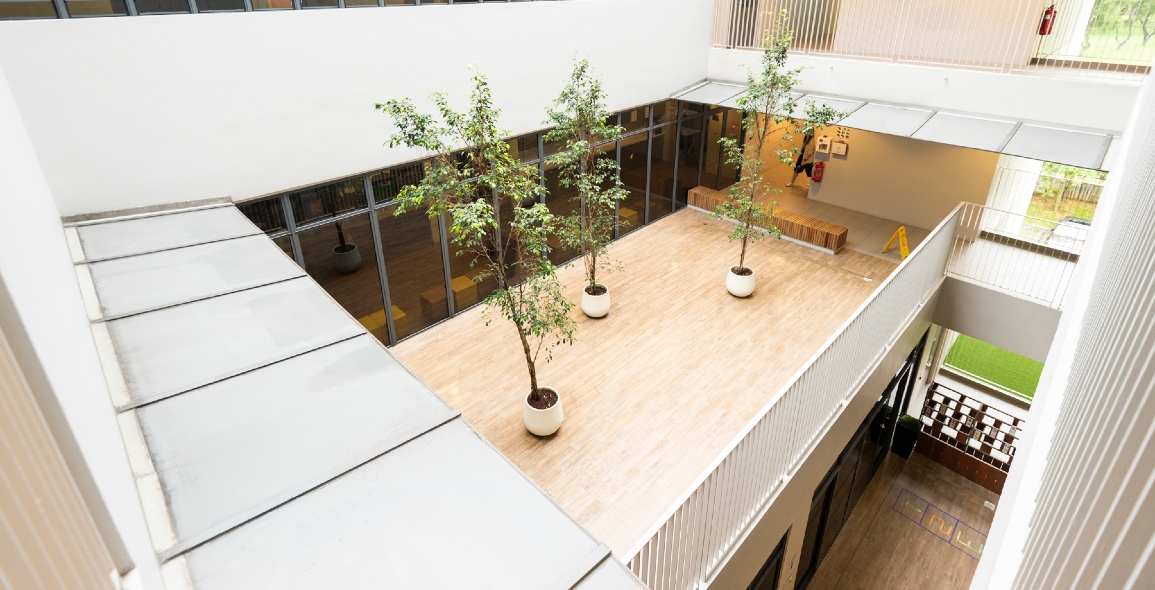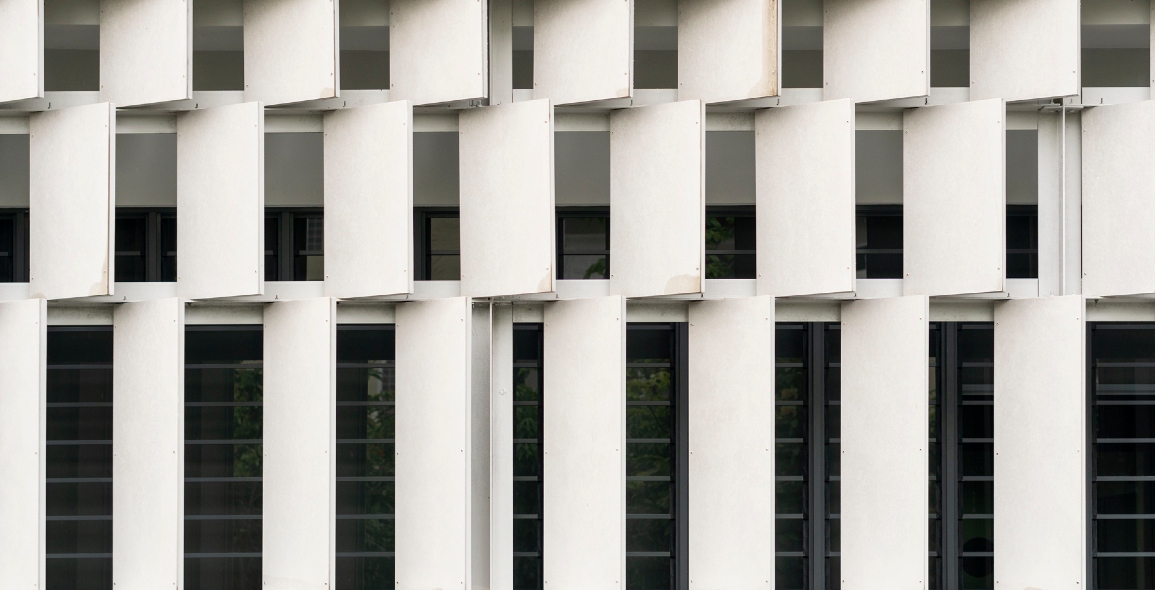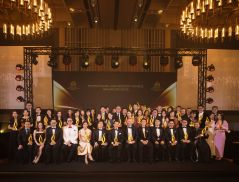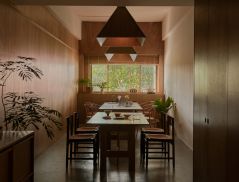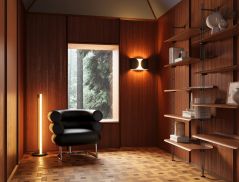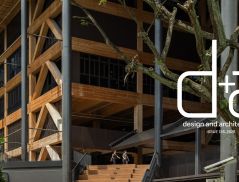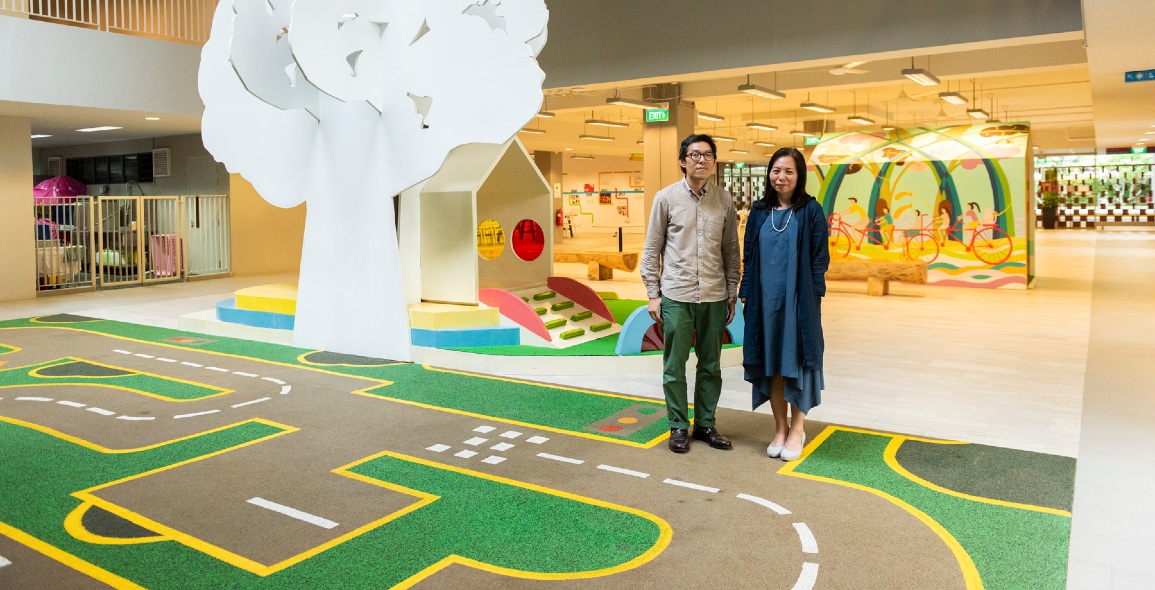
Their design of the Rainbow Centre extension has introduced a new kind of learning environment for students with disabilities.
Located along Margaret Drive, the 4,500m2 four-storey extension to the existing building breaks away from the conventional institution look with open and welcoming spaces to encourage students to learn more independently.
“The classrooms are created to reflect home-based learning, while outdoor spaces are specially curated to support active learning activities,” says Victor Lee, who started Plystudio Architects together with his wife Jacqueline Yeo in 2008.
Over the years, the husband-and-wife team has centred their designs around modulated forms, allowing for an active negotiation and calculation of allocated spaces that can help manage cost and cater to the needs of different users.
This approach has been applied to the Rainbow Centre extension and other projects.
They have worked on a range of buildings and spaces, from the sheltered link-bridge in National Junior College, to the interiors of Waterway Point shopping mall at Punggol, to hotels, cafes, film studios, offices and homes in Singapore and the region.
We take a walk around Rainbow Centre’s extension with the Lees, who show us how their focus on functionality and simplicity has created beautiful and useful spaces.


What were the considerations that went into the design of the extension?
The extension had to accommodate and support a much larger community of teachers and students that included volunteers and caregivers. The student population was also diverse, ranging from pre-schoolers to teenagers who had very different needs. In designing the various environments, we were mindful to create spaces that enabled students to thrive and learn independently and where they could also be challenged mentally and physically. Beyond this, we were conscious to connect the school to its immediate neighbourhood with a sense of openness.
Tell us more about your design approach.
We first focused on planning and organising the spaces in a rational grid, which then gave rise to its form. Having a clear organisation of space enabled us to create scalable spaces within limited resources. We introduced a central courtyard to serve as the unifying and central focal point and created open spaces to break down the volume and scale of the building. Going beyond the conventional classroom setting, we designed spill-out spaces just outside of these rooms, so that students could feel like they were more at home when learning and playing at any time.
What was one major challenge in the design process?
In working closely with the school and teachers, a question that we constantly asked ourselves was how much do you design and provide for the students in the physical environment that supports their physical needs well and yet nurtures independence and encourage self-directed learning.
What did you find most rewarding about working on the extension?
It is fulfilling to be able create useful and impactful spaces for students to feel safe and inspired to learn in. It is also good to know that the new spaces we have introduced can be adapted further in understanding how to design learning spaces for the future. Following the completion of the extension, there has been interest from the school to replicate some of the teaching and learning spaces we have introduced in the extension into the existing building as well.
Based on the extension project and others, how do you see the role of architects evolving?
I see our roles evolving to become more active facilitators of turning what stakeholders and users want and need into useable designs of environments and spaces. Increasingly, it is important for architects to be brought in at earlier stages of the design process so that we can contribute to conversations and help shape principles and parameters that can make the design process later on more fruitful and productive.
Plystudio Architects’ works were exhibited at the Urban Redevelopment Authority’s (URA) AUDE Space in July 2019. Launched in 2019 at The URA Centre at 45 Maxwell Road, AUDE Space is a dedicated platform that seeks to inspire good architecture and design in Singapore as part of URA’s Architecture & Urban Design Excellence (AUDE) programme. Click here for more information about the AUDE Space. This article first appeared on the Board of Architects website.


 Share
Share
